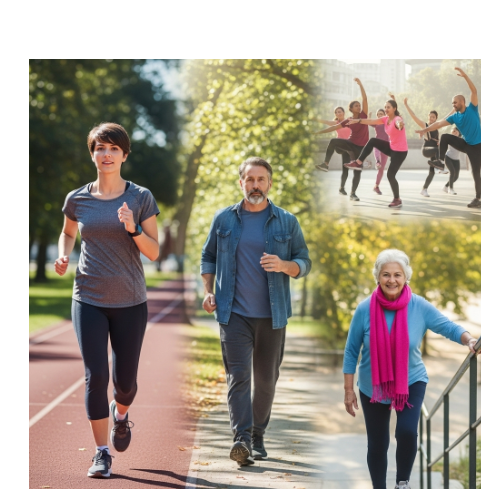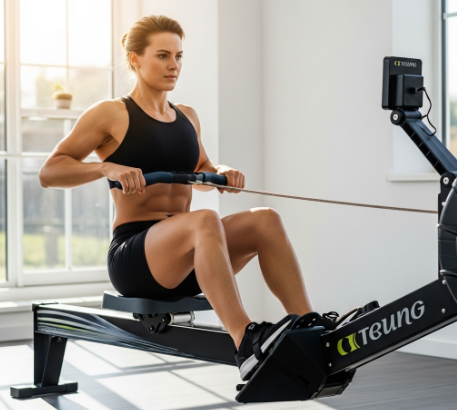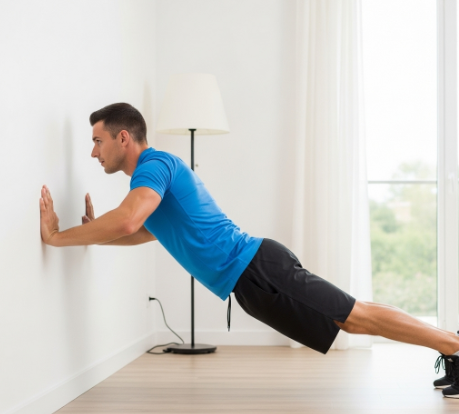Fracture-Proof Your Future: Essential Exercises for Osteoporosis & Better Balance
The Simple and Effective Exercises to Strengthen Bones with Osteoporosis
(By: Francesca Williams)
Bones are living, dynamic tissues that respond and adapt to the forces placed upon them. Just like muscles, they grow stronger with use. As we age, our bone density naturally declines, making conditions like osteoporosis, characterized by weakened, brittle bones, a significant concern. Yet, compelling research consistently shows that engaging in regular, appropriate exercise is one of the most powerful tools in our arsenal to combat this decline. It not only helps maintain robust muscles but also stimulates bone-forming cells, thereby bolstering bone density and dramatically reducing the likelihood of debilitating fractures. Moreover, a critical component of exercise for osteoporosis is improving balance and muscle strength, which are key in preventing falls – a leading cause of bone fractures.
The Royal Osteoporosis Society (ROS), a leading authority in bone health, strongly advocates for a multi-faceted exercise approach, recommending a combination of strength training and weight-bearing exercises as the optimal strategy for maintaining and improving bone health.
Understanding the Types of Bone-Building Exercise
1- Weight-Bearing Exercises
 |
| Essential Exercises for Osteoporosis & Better Balance |
These are activities where you are on your feet, and your bones and muscles work against gravity. This pressure stimulates bone growth and strengthening, particularly in the legs, hips, and spine – areas most vulnerable to osteoporotic fractures. Weight-bearing exercises can be categorized by their impact level:
Low-Impact: Gentle on joints, suitable for many with osteoporosis. Examples include walking, gentle hiking, using a cross-trainer, and dancing.
Moderate-Impact: Offers more bone-strengthening benefits but should be approached cautiously. Examples include brisk walking, marching, and stair climbing.
High-Impact: Provides the most significant bone stimulus but may not be suitable for everyone, especially those with severe osteoporosis or a history of fractures. Examples include jogging, jumping, and high-impact aerobics. Always consult a healthcare professional before attempting high-impact activities.
2. Strength Training (Resistance Exercises)
 |
| Essential Exercises for Osteoporosis & Better Balance |
Strength training involves working your muscles against resistance, such as weights, resistance bands, or your own body weight. When muscles contract, they pull on the bones they attach to. This pulling action sends signals to the bone-forming cells (osteoblasts) to increase bone density and strength. Strength training also builds stronger muscles, which improves stability, balance, and coordination, further reducing the risk of falls.
Six Simple Exercises to Incorporate into Your Routine
Here are six beginner-friendly exercises, highly recommended for their bone-strengthening and balance-improving benefits:
1-Jogging (Moderate to High-Impact Weight-Bearing)
 |
| Essential Exercises for Osteoporosis & Better Balance |
Benefits: Excellent for stimulating bone growth in the hips and spine, and improves cardiovascular health.
How to: If you're new to jogging, start with short intervals of jogging interspersed with brisk walking. Ensure you wear supportive footwear. Always start with a warm-up and end with a cool-down. If high-impact jogging is too much, brisk walking offers similar benefits with less impact.
2- Rowing (Strength Training & Low-Impact Weight-Bearing)
 |
| Essential Exercises for Osteoporosis & Better Balance |
Benefits: Works a wide range of muscles in the back, arms, shoulders, and legs, indirectly strengthening bones through muscle pull. It's also a great cardiovascular workout with minimal impact on joints.
How to: Use a rowing machine (ergometer). Focus on proper form: push with your legs, pivot at your hips, pull with your arms, and reverse. Start with short durations (e.g., 10-15 minutes) and moderate resistance, gradually increasing as you get stronger.
3- Gardening (Strength Training & Low-Impact Weight-Bearing)
 |
| Essential Exercises for Osteoporosis & Better Balance |
Benefits: A fantastic way to incorporate functional movement, strength training, and weight-bearing into your daily life. Digging, lifting, raking, and weeding all engage various muscle groups and provide beneficial stress to bones.
How to: Vary your tasks to work different muscles. Be mindful of your posture when bending and lifting. Use kneeling pads or a low stool to protect your knees and back. Listen to your body and take breaks when needed.
4- Dancing (Low to Moderate-Impact Weight-Bearing & Balance)
 |
| Essential Exercises for Osteoporosis & Better Balance |
Benefits: An enjoyable way to improve bone density, especially in the hips and legs. It's also excellent for balance, coordination, and cardiovascular health. The varied movements and changes in direction provide unique stimuli to bones.
How to: Join a dance class (e.g., ballroom, Zumba, or even just free-form movement at home). Start with styles that match your current fitness level and gradually explore more energetic options.
5- Wall Push-Ups (Strength Training)
 |
| Essential Exercises for Osteoporosis & Better Balance |
Benefits: A safe and effective way to build upper body and core strength, which supports posture and can help prevent falls. It strengthens the chest, shoulders, and triceps without putting direct weight on the wrists or lower back.
How to: Stand facing a wall, about arm's length away. Place your hands on the wall slightly wider than shoulder-width apart, at chest height. Lean towards the wall, bending your elbows, keeping your body in a straight line from head to heels. Push back to the starting position. Start with 10-12 repetitions and aim for 2-3 sets.
6- Squats (Strength Training & Weight-Bearing)
 |
| Essential Exercises for Osteoporosis & Better Balance |
Benefits: A powerhouse exercise for strengthening the glutes, quadriceps, and hamstrings, all crucial for supporting the hips and spine. This directly contributes to bone density in the lower body and improves balance.
How to: Stand with your feet shoulder-width apart. Keeping your back straight and chest up, slowly lower your hips as if sitting in a chair. Ensure your knees track over your toes and don't go past them. Lower as far as comfortable, then push back up through your heels. Start with 8-12 repetitions and 2-3 sets. If needed, hold onto a sturdy chair or wall for balance.
Embracing an Active Lifestyle with Osteoporosis
Managing osteoporosis effectively involves more than just medication; it necessitates an active lifestyle carefully tailored to your needs. The Royal Osteoporosis Society (ROS) is an invaluable resource, offering membership benefits that include informative magazines, comprehensive website access, and expert guidance to help individuals navigate their journey with osteoporosis. Remember, every step, every movement, and every controlled resistance contributes to building stronger bones and a more resilient body. Always consult with your doctor or a physical therapist before starting any new exercise program, especially if you have osteoporosis, to ensure the activities are safe and appropriate for your specific condition.
Labels: Fracture-Proof Your Future: Essential Exercises for Osteoporosis & Better Balance



1 Comments:
It's reassuring and action-oriented, directly addressing the needs of those with osteoporosis. By emphasizing "Simple and Effective," it removes intimidation and offers practical hope for strengthening bones.
Post a Comment
If you have any doubt, please let me know
Subscribe to Post Comments [Atom]
<< Home